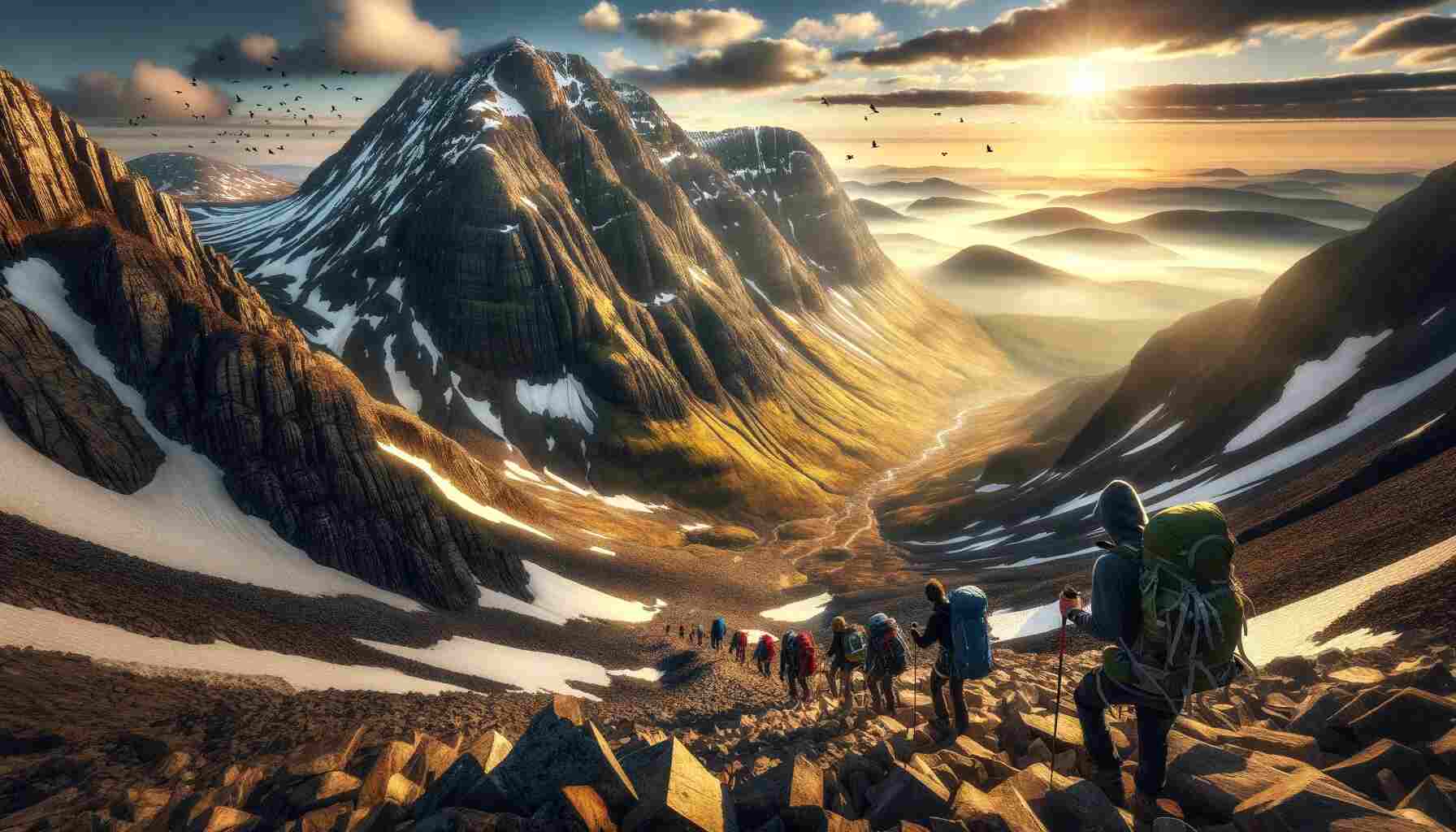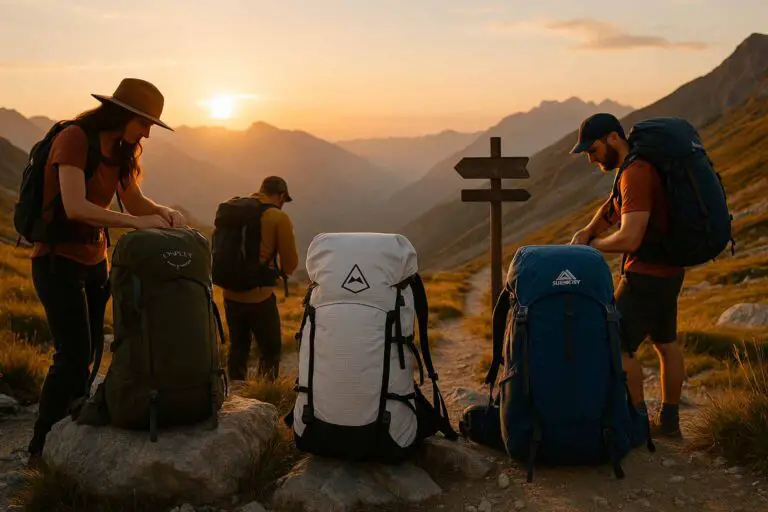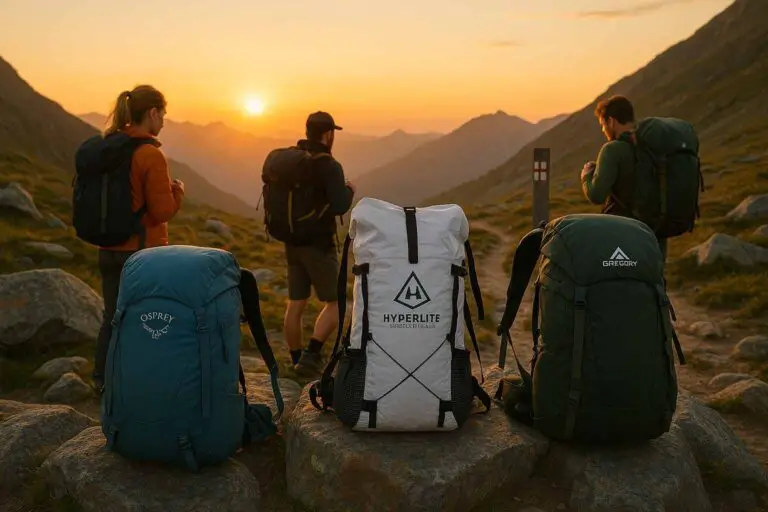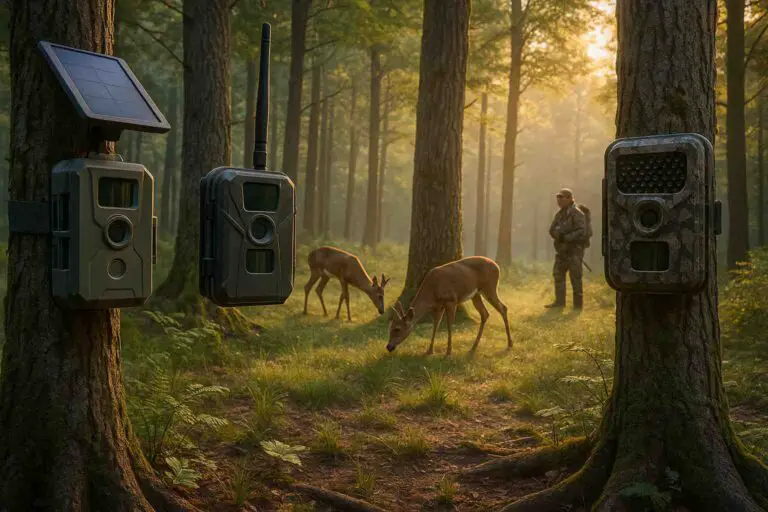Ben Nevis, the highest peak in the British Isles, is a coveted destination for hikers and mountaineers. Located in the Scottish Highlands, this majestic mountain stands at 1,345 meters (4,413 feet) above sea level. Its allure lies not only in its impressive height but also in its rugged beauty and the challenging terrain it offers. Many adventurers are drawn to this iconic peak, but how hard is it to climb Ben Nevis?
Understanding the Terrain
Ben Nevis, also known as “Beinn Nibheis” in Scottish Gaelic, is renowned for its ever-changing weather conditions and challenging topography. To gauge the difficulty of climbing Ben Nevis, we must first understand the terrain and its features.
The Main Route: Pony Track (Tourist Path)
The most popular route up Ben Nevis is the Pony Track, also known as the Tourist Path. This path starts from the Glen Nevis Visitor Centre, making it accessible to a wide range of hikers. The Pony Track is approximately 8.5 kilometers (5.3 miles) long and involves a total ascent of around 1,335 meters (4,380 feet).
Difficulty Level: The Pony Track is considered the easiest route up Ben Nevis. However, it is essential to note that “easiest” does not equate to “easy.” The path is well-maintained, but the ascent can still be strenuous, especially for those not accustomed to long hikes and steep inclines.
Terrain: The path begins with a gradual incline through the forests of Glen Nevis but quickly becomes steeper as you ascend. Higher up, the terrain becomes rocky, and you will encounter loose scree, making footing more challenging.
Other Routes
Apart from the Pony Track, there are other, more challenging routes up Ben Nevis, such as the CMD (Carn Mor Dearg) Arete and the North Face. These routes are significantly more demanding and require a higher level of mountaineering skill and experience.
Physical Demands
Climbing Ben Nevis demands a certain level of physical fitness. While the Pony Track is the easiest route, it still presents challenges that require a basic level of endurance, strength, and agility. Here are some key physical demands to consider:
- Endurance: The ascent up Ben Nevis can take between 7 to 9 hours round trip, depending on your pace and conditions. You will need the stamina to hike continuously for this duration.
- Strength: The rocky terrain can be taxing on your leg muscles, especially on the descent. Strong quadriceps and calf muscles are beneficial for maintaining stability and reducing the risk of injury.
- Balance and Coordination: As you ascend higher, the terrain becomes more uneven and rocky. Good balance and coordination are essential to navigate safely.
- Weather Resistance: Be prepared for rapidly changing weather conditions. The ability to withstand cold temperatures, rain, and wind is crucial for a successful climb.
- Altitude Considerations: While Ben Nevis is not extremely high in terms of altitude, some individuals may experience symptoms of altitude sickness, such as headache and nausea. Being aware of these symptoms and knowing how to manage them is important.
It’s essential to assess your own fitness level and make appropriate preparations before attempting to climb Ben Nevis. Engaging in regular cardiovascular exercise, strength training, and hiking practice on less challenging terrain can help build the necessary physical capabilities.
Weather and Seasonal Considerations
One of the most significant challenges of climbing Ben Nevis is its unpredictable and rapidly changing weather. The mountain’s location near the Atlantic Ocean makes it susceptible to swift weather shifts, even during the summer months. Here are some key weather and seasonal considerations:
Rain and Fog
Ben Nevis is notorious for its rain and fog, which can reduce visibility and make navigation difficult. It is crucial to be equipped with appropriate waterproof clothing, including a reliable rain jacket and pants, to stay dry and comfortable.
Snow and Ice
During the winter months, Ben Nevis is often covered in snow and ice. Climbing in these conditions requires additional skills and equipment, such as crampons and ice axes. It is not recommended for inexperienced climbers to attempt Ben Nevis in winter without proper training.
Temperature Variation
The temperature on Ben Nevis can drop significantly as you gain altitude. Even in the summer, it is not uncommon for temperatures to be near freezing at the summit. Layering clothing is essential to regulate body temperature effectively.
Daylight Hours
In the winter, daylight hours are limited, so it’s important to plan your ascent to ensure you have enough time to complete the hike safely. In the summer, the extended daylight hours allow for more flexibility in timing.
Before embarking on your climb, always check the weather forecast and be prepared for changing conditions. It is advisable to carry a map, compass, or GPS device and know how to use them for navigation in case visibility becomes poor.
Hazards and Safety Precautions
Climbing any mountain comes with inherent risks, and Ben Nevis is no exception. Understanding the potential hazards and taking appropriate safety precautions is crucial for a safe and enjoyable climb.
Navigation
Navigating on Ben Nevis can be challenging, especially in poor visibility. It is essential to have a map and compass and know how to use them. GPS devices and mobile apps with offline maps can also be valuable tools.
Loose Rocks and Scree
As you ascend higher on Ben Nevis, you will encounter sections with loose rocks and scree. Take care with your footing, and be cautious not to dislodge rocks that could pose a danger to those below you.
River Crossings
The Pony Track route includes several river crossings. Be cautious when crossing these streams, especially after heavy rainfall when water levels can rise quickly.
Avalanches (in Winter)
During the winter months, avalanches are a potential danger on certain routes, particularly the North Face. Climbers should have proper avalanche safety training and equipment if attempting Ben Nevis in winter.
Mountain Rescue
In case of emergency, it is essential to have a way to call for help. The Lochaber Mountain Rescue Team operates in the Ben Nevis area and provides assistance to climbers in need. Carry a fully charged mobile phone and be aware of areas with mobile network coverage.
Essential Gear and Clothing
Having the right gear and clothing is crucial for a successful ascent of Ben Nevis. Here is a list of essential items to consider:
- Footwear: Sturdy hiking boots with ankle support and good traction are essential for navigating rocky terrain.
- Clothing: Dress in layers to regulate your body temperature. A moisture-wicking base layer, an insulating mid-layer, and a waterproof outer layer are recommended.
- Headgear: Wear a hat to protect your head from the sun or cold, and consider a beanie or balaclava for warmth.
- Gloves: Insulated gloves are essential, especially in colder months.
- Backpack: Use a comfortable, well-fitting backpack to carry your gear, food, and water.
- Food and Water: Carry enough food and water for the entire hike, as there are no facilities for refueling on the mountain.
- Navigation Tools: Bring a map, compass, or GPS device, and know how to use them.
- First Aid Kit: Pack a basic first aid kit with essentials like bandages, antiseptic wipes, and pain relievers.
- Headlamp: In case your hike extends into the evening, a headlamp is vital for visibility.
- Emergency Whistle and Blanket: These small, lightweight items can be invaluable in an emergency situation.
- Mobile Phone: Carry a fully charged mobile phone with emergency contact numbers programmed in.
- Crampons and Ice Axe (in Winter): If climbing in winter, ensure you have the appropriate gear for snow and ice conditions.
Preparations and Training
Climbing Ben Nevis should not be undertaken lightly. Proper preparations and training can significantly enhance your chances of success and safety. Here are some steps to consider before your ascent:
1. Research and Planning
- Route Selection: Choose the route that matches your skill level and experience. For beginners, the Pony Track is recommended.
- Weather Forecast: Check the weather forecast for the day of your climb and be prepared for changing conditions.
- Permits: No permits are required to climb Ben Nevis, but it’s essential to check for any restrictions or closures in advance.
- Group Size: It’s safer to climb with a group or at least one other person. Solo climbing should be reserved for experienced mountaineers.
2. Physical Training
- Cardiovascular Fitness: Engage in regular cardiovascular exercise, such as hiking, running, or cycling, to build endurance.
- Strength Training: Strengthen your leg muscles, core, and upper body to handle the demands of the hike.
- Practice Hiking: Hike on less challenging terrain to familiarize yourself with your gear and build confidence.
3. Navigation and Safety
- Navigation Skills: Learn how to use a map, compass, or GPS device for effective navigation.
- Emergency Procedures: Familiarize yourself with basic first aid and emergency protocols.
- Avalanche Training (in Winter): If climbing in winter, consider avalanche safety training.
4. Gear Check
- Equipment Inspection: Ensure all your gear is in good working condition before your climb.
- Proper Clothing: Dress appropriately for the expected weather conditions.
5. Hydration and Nutrition
- Stay Hydrated: Begin your hike well-hydrated and continue to drink water throughout the climb.
- Nutrition: Pack high-energy snacks and meals to keep your energy levels up.
Tips for a Successful Climb
Now that you’ve prepared physically and mentally for your Ben Nevis adventure, here are some additional tips to ensure a successful climb:
- Start Early: Begin your hike early in the day to allow ample time to complete the ascent and descent before darkness falls.
- Pace Yourself: Don’t rush. Maintain a steady pace and take breaks as needed to conserve energy.
- Stay on the Path: Stick to established trails and paths to minimize environmental impact.
- Leave No Trace: Follow the principles of Leave No Trace by packing out all your trash and waste.
- Respect the Mountain: Be mindful of the natural environment and the history of the mountain. Ben Nevis holds cultural significance for many.
- Stay Informed: Keep an eye on the weather and be prepared to turn back if conditions deteriorate.
- Follow the Cairns: Cairns (piles of rocks) often mark the trail on Ben Nevis, especially in areas with poor visibility. Use them as guides.
- Mountain Rescue: Save the Lochaber Mountain Rescue Team’s number (+44 7592 577421) in your phone in case of emergencies.
- Enjoy the Views: Take time to appreciate the stunning views from the summit but be cautious near the edges, as they can be steep and treacherous.
- Know Your Limits: If at any point you feel uncomfortable or unsafe, it’s okay to turn back. Safety should always be your top priority.
Frequently Asked Questions (FAQs)
1. Are there age restrictions for climbing Ben Nevis?
- No, there are no specific age restrictions for climbing Ben Nevis. However, it’s essential to consider the physical fitness and endurance of all participants, especially children and seniors, when planning the hike.
2. Can I bring my dog with me when climbing Ben Nevis?
- Yes, dogs are allowed on the Ben Nevis trails, but they should be kept on a leash to protect the local wildlife and ensure safety. Make sure to carry water and snacks for your furry companion.
3. Are there any accommodations on or near Ben Nevis?
- There are no accommodations on the summit of Ben Nevis, but there are various options for lodging in the nearby town of Fort William, including hotels, hostels, and campgrounds.
4. What’s the best time of year to climb Ben Nevis?
- The most popular time to climb Ben Nevis is during the summer months (June to September) when the weather is relatively milder. However, some experienced climbers enjoy tackling the mountain in the winter for a different challenge.
Must-read: The Best Time to Climb Ben Nevis
5. Is it necessary to hire a guide to climb Ben Nevis?
- Hiring a guide is not mandatory, especially if you are planning to take the Pony Track route, which is well-marked and suitable for most hikers. However, for more challenging routes or if you lack experience, hiring a qualified guide is strongly recommended for safety and navigation.
6. Can I camp on Ben Nevis?
- Camping on the summit of Ben Nevis is not allowed, and wild camping is discouraged. There are designated campgrounds in the surrounding area where you can set up camp.
7. What is the average time it takes to climb and descend Ben Nevis via the Pony Track?
- On average, it takes between 7 to 9 hours to complete the ascent and descent of Ben Nevis via the Pony Track. However, the actual time can vary depending on your pace and the weather conditions.
8. Are there restroom facilities on the Pony Track route?
- There are no restroom facilities along the Pony Track route. Hikers are advised to use the facilities at the Glen Nevis Visitor Centre before starting the climb.
9. Where is Ben Nevis?
- Ben Nevis is located in the Grampian Mountain range within the Lochaber area of the Scottish Highlands, near the town of Fort William.
10. Is there a path up Ben Nevis?
- Yes, there are several paths/routes up Ben Nevis. The most popular one is the Pony Track (Tourist Path). Other routes include the CMD Arete and the North Face.
11. What grade is Ben Nevis?
- Ben Nevis itself is not typically graded as it is primarily a hiking peak. Climbing routes on Ben Nevis may have varying grades, but for most hikers, it is considered a challenging hike rather than a technical climb.
12. Can a beginner climb Ben Nevis?
- Yes, beginners can climb Ben Nevis using the Pony Track route, which is the most accessible and suitable for those with little or no mountaineering experience. However, it’s essential to be physically prepared and adequately equipped.
13. How fit do you need to be to climb Ben Nevis?
- To climb Ben Nevis, you should have a basic level of fitness. Endurance for a 7-9 hour hike and strength for uneven terrain are crucial. Regular cardiovascular exercise and hiking practice on less challenging trails can help prepare you.
14. Is there a cafe at the top of Ben Nevis?
- No, there is no cafe or any facilities at the summit of Ben Nevis. You need to carry your food and water with you.
15. Is Snowdon harder than Ben Nevis?
- Generally, Ben Nevis is considered the highest and potentially most challenging of the two peaks due to its variable weather conditions and rocky terrain. However, the difficulty of a climb can also depend on the specific routes chosen on each mountain.
16. So, is Ben Nevis hard to climb?
- Climbing Ben Nevis can be moderately challenging, especially for those with limited hiking experience. The Pony Track route is accessible to most, but it still requires physical fitness, proper gear, and preparedness for changing weather conditions. More challenging routes on Ben Nevis are significantly harder and suitable only for experienced climbers.
These additional FAQs should provide you with more information to help plan your Ben Nevis adventure.
Conclusion
In conclusion, how hard is Ben Nevis to climb? Climbing Ben Nevis can be moderately challenging, largely dependent on factors such as your chosen route and personal fitness level. The Pony Track, the most popular route, offers a relatively accessible path but still involves a strenuous ascent with rocky terrain. The key physical demands include endurance for a 7-9 hour hike, leg strength to tackle uneven terrain, and the ability to cope with rapidly changing weather conditions.
While it is not a technical climb, proper preparation, physical fitness, and respect for the mountain’s unpredictable weather are crucial for a safe and enjoyable ascent. More challenging routes on Ben Nevis require advanced mountaineering skills, making them significantly harder and suitable only for experienced climbers.








